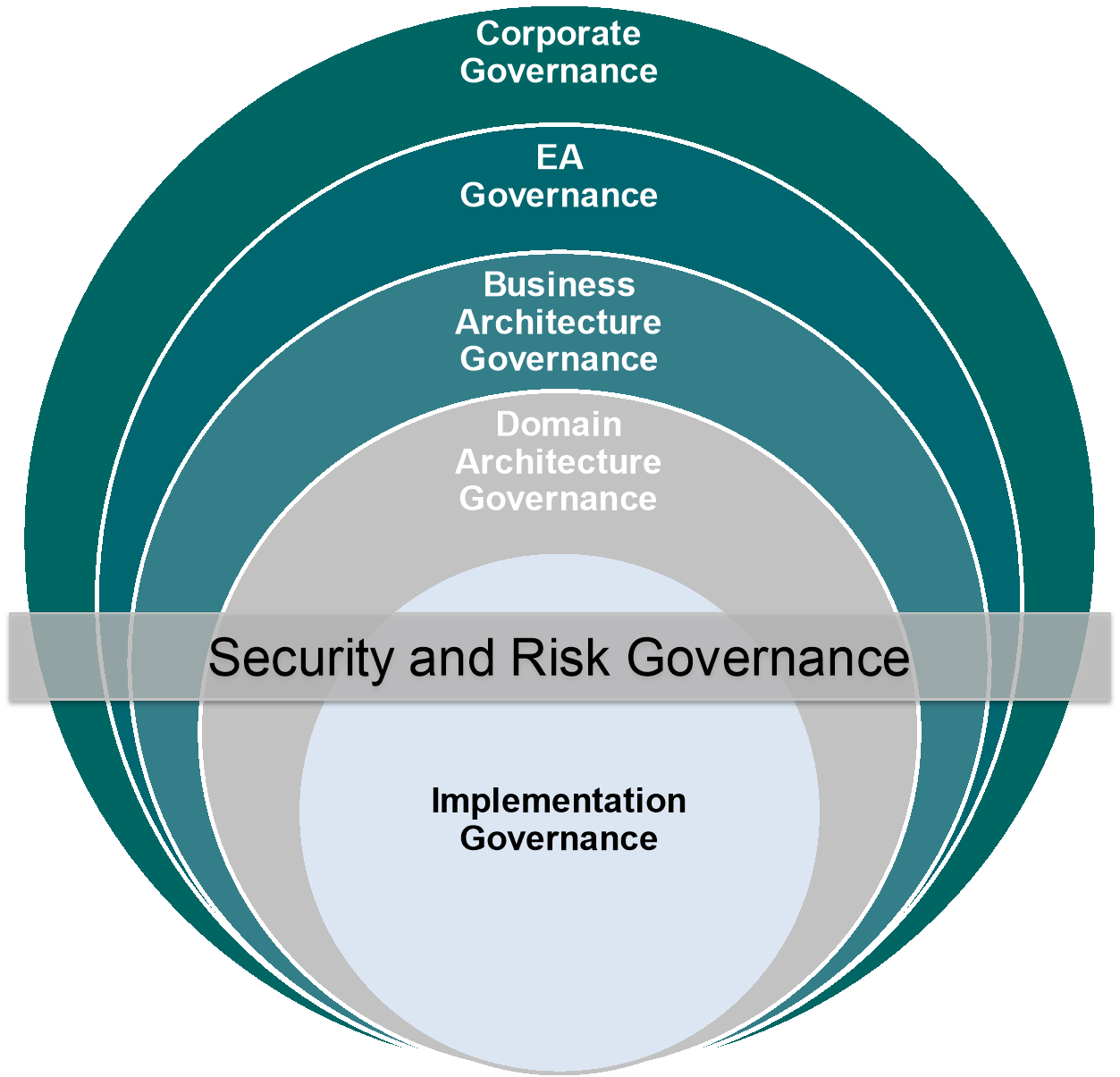Governance

Overview
Within TOGAF the focus is on Architecture Governance and how it supports other forms of governance within an enterprise.
Definition
Given the focus on architecture governance within TOGAF, we can define governance as the system by which the current and future state are directed and controlled.
- A committed and hierarchical decision-making process with a defined structure of relationships to direct and control the enterprise to achieve stated goals.
- Enables the equality of concerns and transparency (making sure all Stakeholders concerns are reflected), protecting the rights and interests of the business.
- It can be used to drive a set of behaviours controlled via measurements and metrics.
Customisation
A customised governance approach should define - How, When, Why and What?
| What | Why | How |
|---|---|---|
| - Development of the Target Architecture | - Without governance there is no need to develop a target architecture | - Architects & Implementer are directed & controlled by Stakeholders |
| - All changes within the scope of the Target Architecture | - Direct & Control change | - Architecture Project (Statement of Architecture Work, Target Architecture Checklist) |
| - Implementation Projects: Architecture Contracts, Architecture Requirements Specifications |
Corporate Governance
A system by which business corporations are directed and controlled.
- Ensures that the business is conducted properly through the guidance and usage of resources
- Focuses on the rights, roles and equitable treatment of Shareholders.
- Enacts a board to review and guide corporate startegy and to set and monitor the achievement of performance objectives.
- Ensures disclosure and transparency of the responsibilities of the board.
- Ensures that strategic guidance, monitoring of management and board accountability are in place.
Architecture Governance
A system by which enterprise architectures are directed and controlled.
- This is a practice and orientation by which Enterprise Architecture and other architectures are managed and controlled at an enterprise-wide level.
- Operates within a hierarchy of governance structures (or tiers) with their own disciplines and processes. (e.g. Corporate Governance, Portfolio Governance, Project Governance)
- May exist at multiple geographic levels with the enterprise.
Governance Repository
The governance artifacts are stored in the Architecture Repository
| Reference Data | Process Status | Audit Information |
|---|---|---|
| - Description of the governance procedures | - State of the governance processes | - Completed governance process action |
| - Guidance & Instruction in project implementation | - Examples: Compliance Requests, Dispensation Requests, Compliance Assessments | - Key decisions & responsible actors for any architecture project |
| - Architecture and supporting process developments, guidance and precedence |
Benefits
The benefits of Architecture Governance are adopted from Corporate Governance.
Discipline
Commitment to adhere to procedures, processes and authority structures
Responsibility
Each contracted party is aware of their responsibilities
Accountability
Each contracted party, organisation group or individual are accountable and authorised for their actions and the results of their actions
Fairness
Decisions, processes and implementations will not be allowed to create unfair advantage to any party
Transparency
Decisions and supporting actions are available for inspection and review
Independence
Processes and decision-making mechanisms will not be subject to undue influence and conflict of interest.